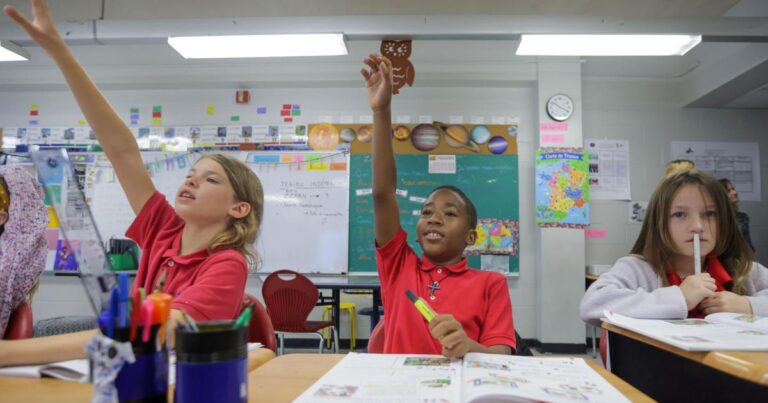Nearly fifty years after teaching French as a primary language was banned in Louisiana schools, the New Orleans area now has what one official called an “embarrassment of riches” in French immersion programs.
In Louisiana bilingual education has grown from 405 students in 1991 to more than 5,300 students today, Jacques Baran, the cultural attaché for the French consulate of New Orleans, told parents gathered recently at the Alliance Française in Uptown.
“Being bilingual is essential for one thing: you master different cultural codes and it gives you the ability to better understand the world, which I find is very very important in the modern world,” Baran said.
Five schools in New Orleans offer language immersion programs: Audubon Charter School; Ecole Bilingue; Edward Hynes Charter School; International School of Louisiana; and the Lycée Français de La Nouvelle-Orléans.
Benefits of bilingualism
Michele Braud, a world language specialist with the Louisiana Department of Education, said state data has shown that students in immersion programs score higher on ACT and LEAP tests than those who attend traditional schools.
Braud noted Louisiana’s history as a bilingual state for centuries before 1921 when the state constitution banned French from being taught as a primary language in schools, a measure that remained until 1974.
Olivier Boasson, head of the French schools department at the French embassy in Washington, D.C., said French immersion schools in New Orleans are part of a unified network that works with the U.S. Department of Education to meet standards. He said the French curriculum has been shown to develop students’ critical thinking skills.
“As you know the French can be a critical and fairly vocal lot and that is in no small part due to their exposure to critical thinking at school from an early age,” Boasson said.
Key differences in programs
Immersion programs typically begin when a child is in kindergarten, though students can join schools if they pass a language aptitude test in later grades.
Many students progress to traditional schools after 8th grade, though Lycée Français serves students through 12th grade.
Though all are considered immersion programs — meaning the overwhelming majority of instruction is delivered in French — Hynes and the International School of Louisiana teach Louisiana curriculum in French, while Audubon, Ecole Bilingue and Lycée Français follow French curriculum, meeting both French and Louisiana state standards.
“That means American students learn exactly the same subjects as French students in France,” at those schools, Jacques said.
Hynes offers a French track for each grade level, said Michelle Douglas, founding CEO of Hynes Charter School. Immersion tapers off around 5th grade, she said, though students continue French reading and writing classes.
Laura Edelman Canon, principal of the International School of Louisiana’s Uptown campus, said the charter school draws students from eight different parishes around New Orleans. Students choose either French or Spanish immersion. After 1st grade, English is introduced an hour a day up through 5th grade, increasing through middle school.
Audubon charter school offers immersion at its Uptown campuses for kindergarten through eighth grade. All core subjects – about 70 to 90% of the day – are taught in French.
Lycée Français, also open to all families in Louisiana, teaches students through high school. Students can graduate with an American and French diploma.
Ecole Bilingue, the only private independent French immersion school in Louisiana, purposefully keeps class sizes between 15 to 18 students, said Pierre-Loïc Denichou, head of school.
“Louisiana is especially rich in possibilities for families who might want to choose either immersion bilingual in the American curriculum or the French curriculum itself which opens all the possibilities of high level teaching of the English language,” Boasson said.



